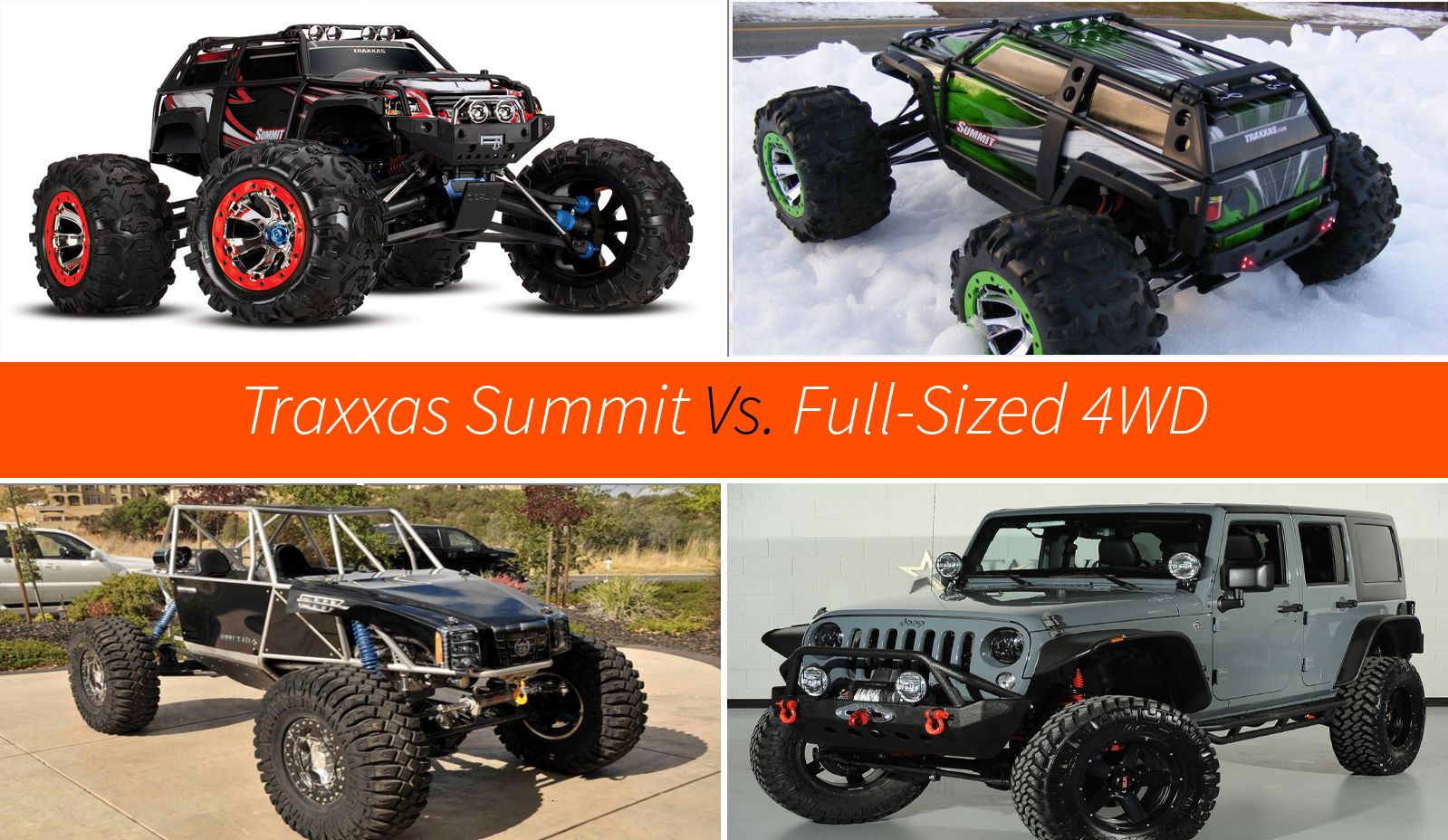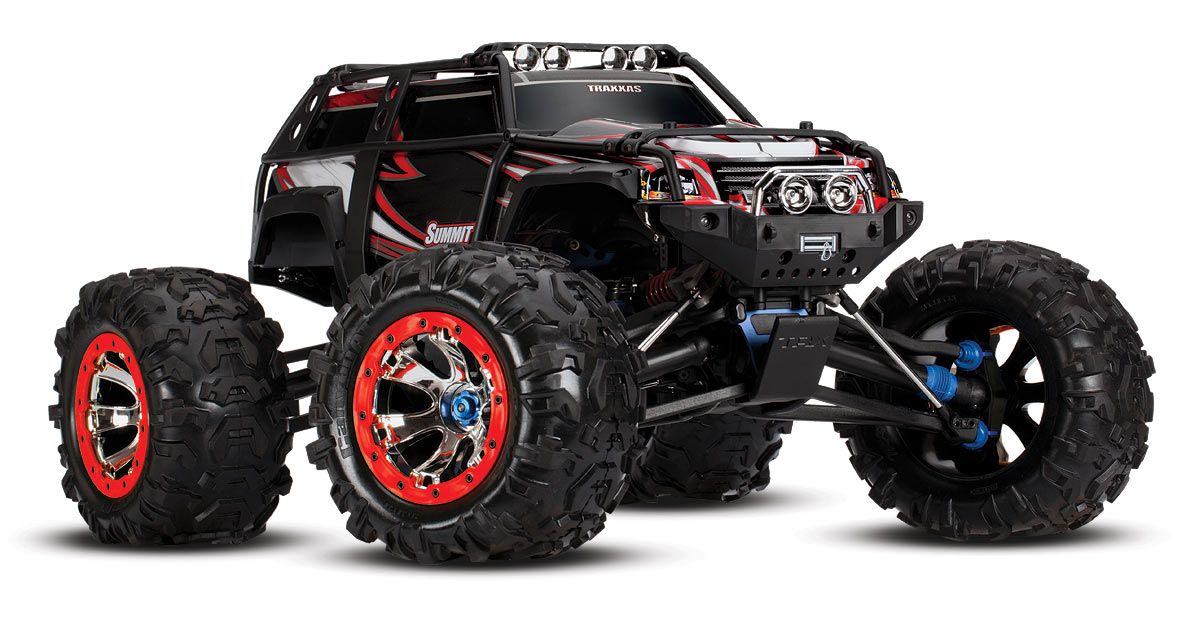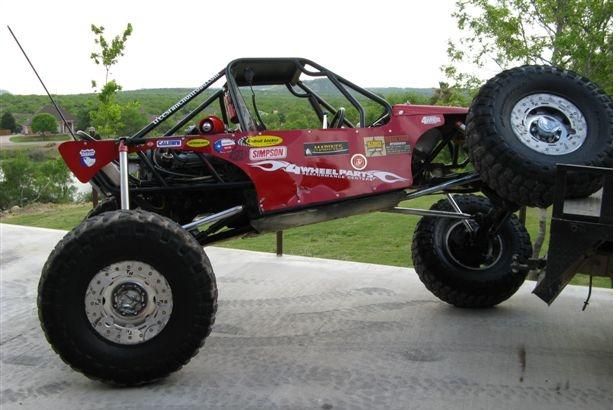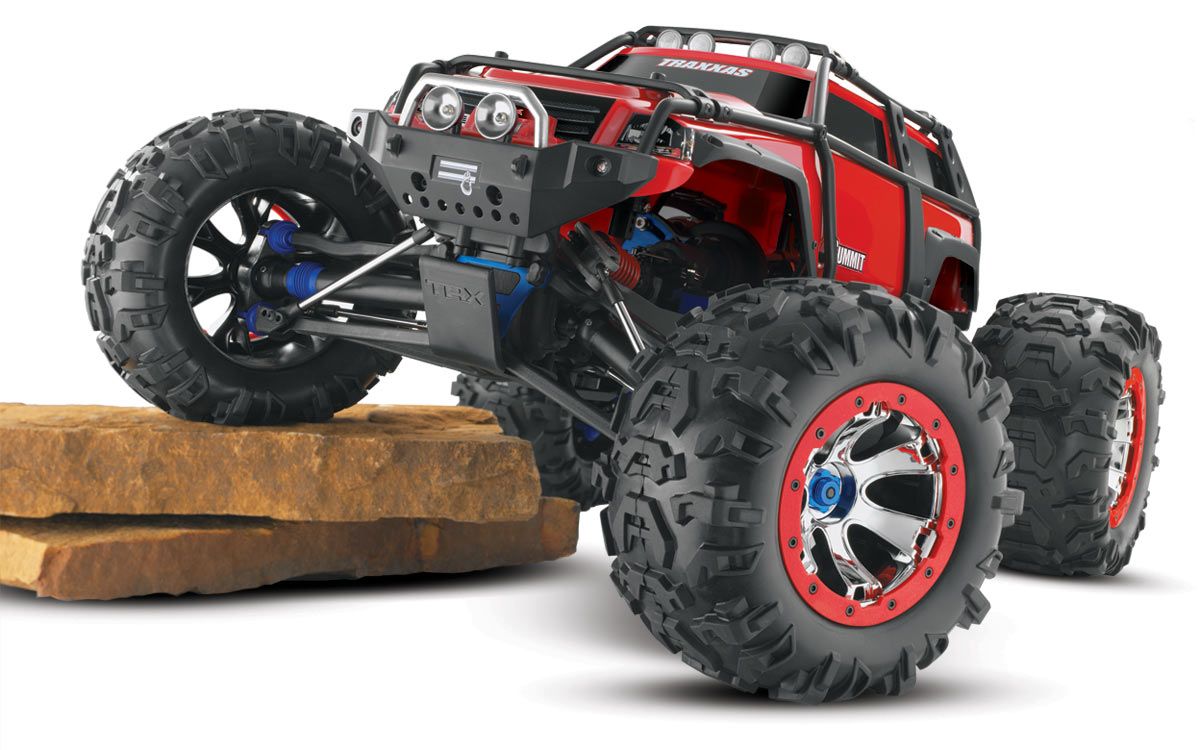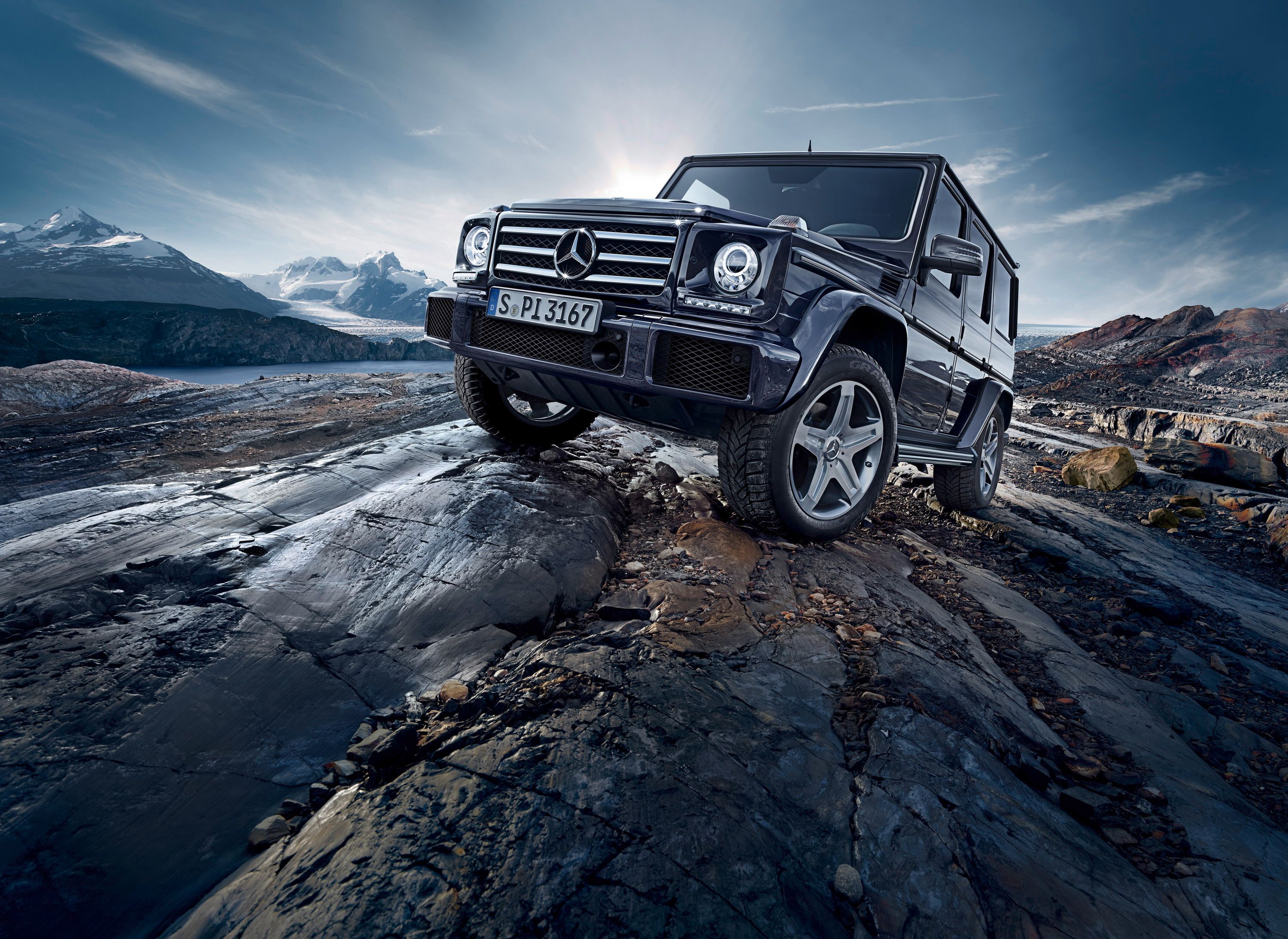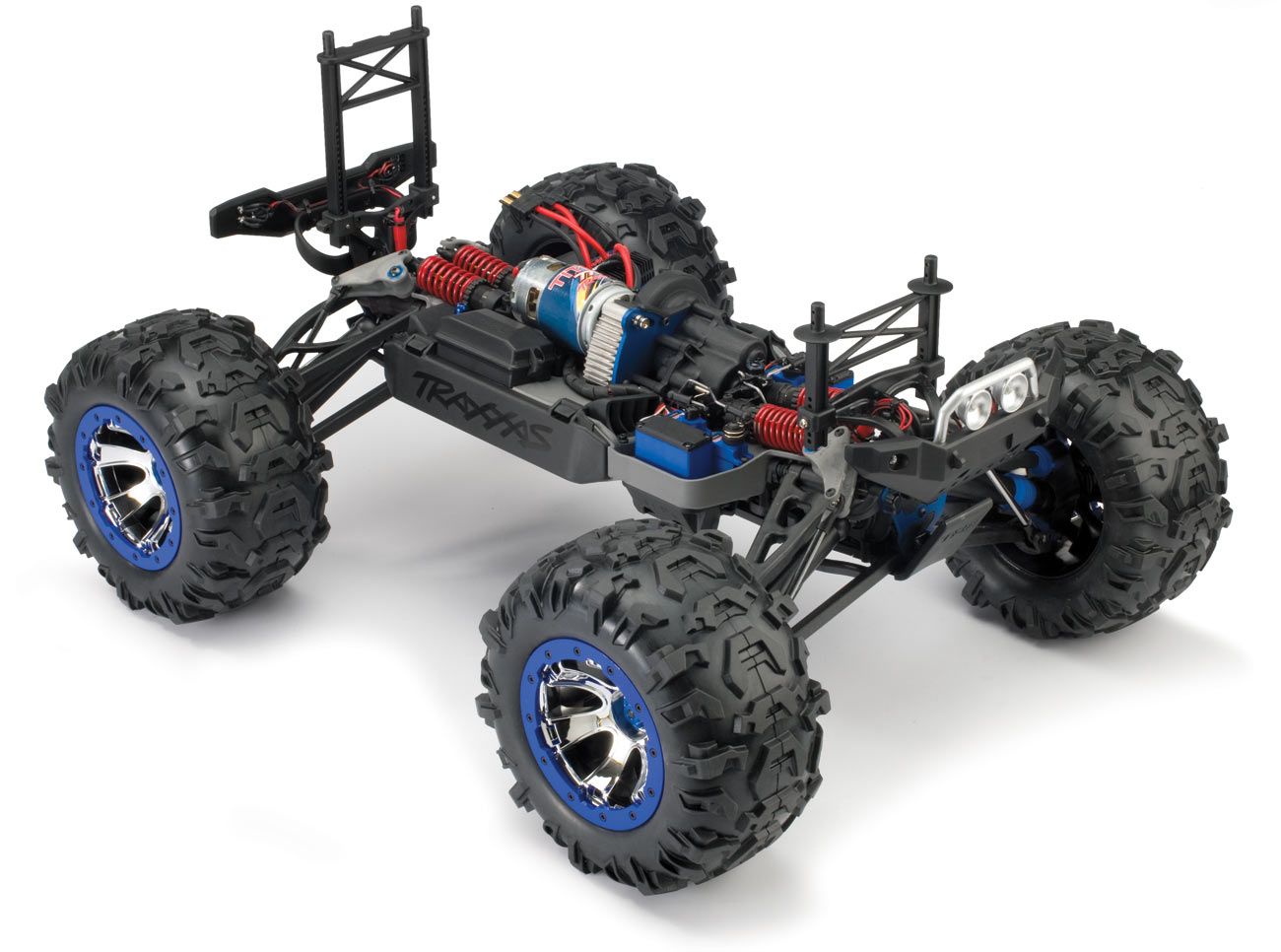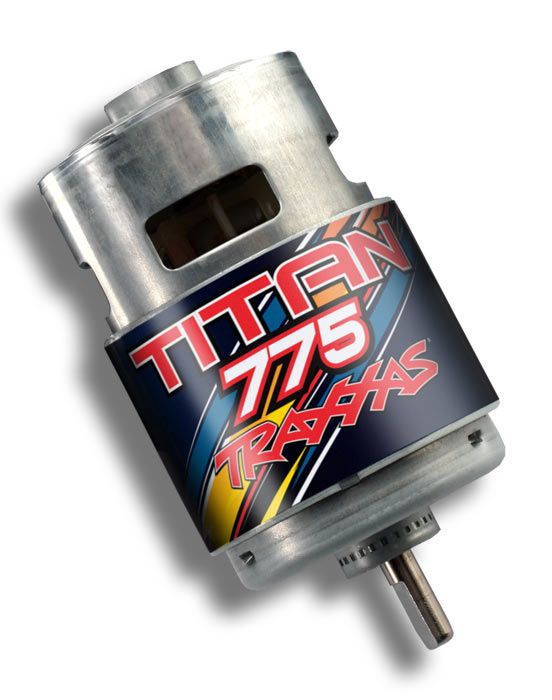Let's face it -- it's not easy being an off-road RC truck kind of person. Off-roader RC vehicles don't have the crowd-drawing awe factor of RC airplanes, which at 500 feet of altitude at least look plausibly full-scale. Dirt buggies don't have the poncy F1->ke190 appeal of road racers, those studies in design sophistication and engineering. Off-road trucks are just bashers -- pure, pointless, unadulterated fun sure to draw the ire of those too boring to see the value in juvenile hooliganism.
But even we juvenile delinquents aren't immune to getting smarter with age -- and neither are our toy makers. Traxxas got into the basher business a few decades ago, and quickly catapulted the ready-to-run scene from cute little hobby shop toys to full on psychotic racers. Recently, we published an article on one of the company's latest dalliances into non-dirt applications: the mind-blowing XO-1 Supercar. AKA, "The fastest thing ever to come out of a box since .50 cal BMG ammunition." (Incidentally, also popular in Texas.) There, we compared the XO-1 to its full-scale electric counterpart, the 2015 Tesla Model S P85D -- and they scored a lot closer in a lot of ways than you might expect.
But don't think for a second that Traxxas has forgotten its dirty, rocky roots. In this article, we're going to compare their latest Summit off-roader to some of the best full-scale off-roaders on the market today, to see how small-scale tech has kept up with stuff we can actually sit in. It probably won't shock you to learn that a lot of the big, dumb simplicity that makes great off-roaders truly great has transferred over. But in the details, you may be surprised to discover exactly how high the "summit" of full-scale tech reaches in this very short-scale truck.
Continue reading for the full story.
Basics
At first glance, the Summit (released in 2009) seems about like what you'd expect for any 1/10 scale 4WD off-roader -- certainly within keeping of other Traxxas models. It's essentially a follow-up to the Revo, which was itself a redesign of the classic and (literally) groundbreaking T-Maxx.
In essence then, while the Summit is a clean-sheet design, you might as well call it the third-generation T-Maxx. Which honestly, I think they should have. Hey, if Ford's->ke31 allowed to say that unibody station wagon->ke143 thing they've got now is an Explorer,->ke342 Traxxas can call their Summit the "T-Maxx III."
Architecturally, the Summit (like the T-Maxx before it) isn't so much a miniaturized Jeep->ke40 or F-150->ke423 as it is a small monster truck. Like Big Foot, Grave Digger or any other monster truck built since the late '80s, it's mid-engined, four-wheel-drive and uses ridiculous tires and massive suspension travel.
Fun fact: The Summit's stock tires have so much floatation that the truck actually floats, allowing it to "drive" over shallow water like a paddle boat. Probably not the best possible idea with an electric RC truck, even one with completely waterproof electronics like the Summit.
But it's interesting to note that the original monster truck, Bigfoot, proved back in the day that it could pull off this exact trick when it raced a paddle steamer down the Mississippi River.
Chassis
As far as the chassis, Traxxas calls the Summit's E-Revo derived underpinnings "futuristic." Personally, from an industrial design perspective, I'd call it weirdly beautiful. Not in the sense that it's slick or smooth; if anything, the Summit's chassis is about as visually graceful as a cyborg praying mantis with Tourettes.
But it does have a kind of purely mechanical aesthetic that brings to mind Johnny 5 from Short Circuit, the original Sulaco cruiser from Aliens, or the original Robocop. The real Robocop...you know, the one that actually looked like a "robot cop."
But past the '80s-cool industrial aesthetic, the Summit's thick and cross-braced control arms compare very favorably to any full-sized trail rig you might find. In fact, at a rough guess, I'd say it looks slightly sturdier per scale than the Monster Truck suspension system on which its based.
Put it this way: Combing over five years worth of forum posts on the Summit, you won't find many people claiming to have broken anything in the chassis or suspension. Not even the T-Maxx racked up that kind of reliability record -- and it was leagues ahead of any full-sized truck. A full-on Baja race truck might come close, but even that's unlikely.
The suspension itself is designed for long travel -- which according to owners, means about 2 inches both up and down; total 4 inches of travel. Doesn't sound like much, particularly compared to some dedicated rock-crawling trucks. Which the Summit isn't.
But it's still fantastic, and pretty damned impressive when you realize how few full-scale race vehicles in the world have 40 inches of total suspension travel. For example, check out this pic of a super-extreme suspension engineered for off-road trail buggies:
Pretty impressive, right?
That's 22 inches of travel.
And how about full-sized monster trucks? They have about 28 inches of suspension travel, despite being about three times the size of a regular vehicle. Point is, about 4 inches of suspension travel is fantastically impressive on a one-tenth scale vehicle.
One of the most visually interesting bits of the chassis is something that comes straight from full-sized rock-crawling Jeeps.->ke40 Trail buggies usually use external roll cages (exocages) to protect the driver and body against the inevitable roll-over. (Because if you don't roll a rock buggy at least once, you're not driving it right.) The same is true of the Summit.
While it might be easy to take those spindly bits of tubing outside the body as cosmetic frifferies, they're fully functional and capable of absorbing the entire weight of the truck dropped from a pretty significant height. Nevermind the occasional flip -- you could probably drop this thing on its roof from the roof of your house before sustaining any real damage.
Overall, not too shabby on the chassis end. Most things about the Summit are fairly comparable to the T-Maxx it descended from; which isn't a knock, considering how great the T-Maxx was. It's not like Jeep goes out of its way to completely reinvent a chassis every 10 years when the original still works fine.
But the ability to switch in and out of 4WD, from high to low range, and lock/unlock both diffs from the controller; the twin-CV axle shafts and waterproof everything make this rig a serious one indeed.
By car standards, the Summit's chassis is at least as new and improved as the latest Land Rover->ke46 or Mercedes->ke187 G-Series; neither of which anyone would call antiquated. And its suspension travel, while not quite as optimized for extreme rock crawling as some other trucks, is still very impressive and plenty to handle almost anything you can throw at it.
Inspecting Gadgets
As a rule, it's pretty rare that scale RC "toys" will keep up with full-scale tech in anything. In the XO-1 article, we made a pretty strong case that the car itself was absolutely comparable to almost any full-sized auto on the road today.
But, despite the fact that it really is the RC of the Bugatti Veyron,->ke1112 the XO-1's fully locked 4WD drivetrain is barely as sophisticated as an early Willy's Jeep. It's not that big of a deal for a car whose sole purpose in life is to put tons of power down in a straight line -- and it might even be ideal for that purpose. But, it's hard to call the $1,500 XO-1's drivetrain "sophisticated" compared to any full-sized car on the road today.
So, what should you expect for an off-road basher costing half as much?
Yeah. About that.
Despite costing about three-quarters of what the outgoing E-Revo dedicated rock crawler did, the Summit features something you'll never find on a Revo, any other RC truck, or even very many full-sized trucks: driver-controlled locking front and rear differentials.
The list of factory vehicles with this feature is short indeed, and limited almost exclusively to the highest end of the spectrum. It's possible I'm missing something somewhere, but the only models for sale in America that I'm aware of that come with standard selectable locking diffs are the Land Rover and Mercedes G-Class.->ke1712 That's it. Russia and China->ke2090 might offer them on Mercedes knock-offs, and they might be available as options on special edition models in other lines. But as standard equipment, only the Europeans bother to include selectable locking diffs.
Make no mistake, that is every bit as big a deal at 1/10th scale as it is at full scale. This system allows the Summit (like it's Euro cousins) to transition at will from pavement to dirt, asphalt, rocks, snow, standing water or mud without putting a wheel wrong or interrupting your journey.
There's not much debate at this point that the Summit isn't quite the dedicated rock crawler that some of its predecessors were -- it doesn't even qualify for competition in some classes. But so what? Land Rovers aren't dedicated rock crawlers in the same way as old Jeep TJs -- and they're still some of the best all-around off-roaders on Earth.
The Summit's versatility means that like most of today's great off-roaders, it's not overly specialized to one particular task. Rather, it's 95 percent as good as any specialized vehicle at anything they're specialized to to -- but it's versatile enough to do everything 95 percent as well as anything else.
In this respect, the comparison to European vehicles seems especially fitting. Off-road vehicles aside, the only other company I can think of with this kind of focus on all-around, do-it-all performance is BMW's->ke178 M Sport.->ke546 Das Bavarians would approve.
Drivetrain and Performance
Off-roaders know that performance in this arena isn't always an easy thing to quantify. These trucks aren't like the XO-1, which can be compared to anything else almost entirely on the power of raw numbers. For on-road vehicles, mph figures and lap times serve as the final arbiters of performance. But things get a little more complicated when the road doesn't play nice, and tends to go flying out from under your tires. In that case, numbers don't always add up to much. That's not qualifying the numbers that are about to follow, since the Summit certainly doesn't need to make any excuses. It's just a bit of perspective for people who are used to bench-racing big numbers on the internet.
Motor
The heart of the Summit's drivetrain is the Titan 775 brushed DC motor -- the largest and highest-torque motor the company offers. How much torque? Who knows. These kinds of specs are decidedly hard to come by unless a manufacturer happens to send you a spec sheet. And Traxxas don't know me like that. Bu, I can offer a bit of perspective based on a popular upgrade motor from a pretty unlikely source.
While the 775 is the biggest beast in Traxxas' arsenal, it isn't the biggest that will fit in the chassis. Like great hot-rodders of all scales, Summit enthusiasts long ago began performing engine swaps. In this case, the 820 "engine" from a DeWalt cordless impact driver.
The DeWalt 820 swap is popular for several reasons. First, motor and swap kits aren't much more expensive than new Traxxas units. Second, the DeWalt motors are bigger and more torquey, being 820 units instead of 775. Third, they use bearings instead of bushings, and (probably most crucially of all) they're rebuildable.
The stock 775 is a DC motor, meaning it has brushes to wear out; but the 775 isn't rebuildable and its brushes aren't replaceable. So, fry the stock motor and brushes, and you're out $45 plus shipping, handling and mail time for a new 775. Fry the DeWalt, and you can tear it apart, rebuild it and replace the brushes for $5 and change.
And for the truly power-mad, a few companies offer dual DeWalt motor conversions. That's two motors running through the same gear, with a custom mount to put them in the truck. And the bulletproof Traxxas drivetrain will handle it, as long as you don't develop a habit of slamming from forward to reverse too often at high speed on dry pavement. That's just five kinds of dumb, no matter what you're driving.
So, what kind of power are we looking at here? Well, a DeWalt 820 cordless impact driver is rated for 145 foot-pounds of torque running through a single-speed transmission. Figure the Traxxas motor would be about 137 foot-pounds with the same gearing.
Downsides to the DeWalt swap? Not a great deal, aside from the fact that they weigh more, and will raise the truck's center of gravity. That's no small matter, either. DeWalt Summits are known to flip over at the slightest provocation, and dual-motor trucks are about as stable as a buffalo on a telephone pole.
Personally, would I do the DeWalt swap? No. But only because I'd probably install a starter motor from a 1976 Cadillac Eldorado.->ke2068 But I'm an idiot. For others with more sense, I can definitely see why they'd prefer a motor with replaceable brushes. But otherwise, assuming the stock motor was working fine -- meh. Honestly, for more speed, I'd rather switch to a brushless setup from Traxxas and call it a day.
Speaking of which, you might be wondering why Traxxas went with the brushed DC setup at all. Why not install the psycho-mill from the XO-1? In part because brushless motors and their controllers add a lot of cost and complexity to the setup. And off-road trucks thrive on cheap simplicity. A high-wattage motor controller is just one more thing to go wrong in situations where "going wrong" is driving right. Again, I'd still prefer a brushless motor, but Traxxas probably made the right call going with the simpler system.
And besides, the stock 775 is still enough for 34 mph on a fresh set of the stock 2S batteries; and with 70-to-1 low range engaged (on the fly, from the controller by the way), it puts almost three times as much torque to the tires.
Those numbers are enough for most situations; but a change in gearing and a little tune-up work can put you at almost 45 mph. And if you truly want to delve into the land of utterly pointless performance, you can do as one gentleman on YouTube did and hit 76 mph. That's only 25 mph less than the XO-1...the fastest ready to run RC car you can buy. This, in a four-wheel-drive truck.
Summary
All told, the Summit does seem to compare very well to any of the best full-sized off-road vehicles you can name. It's as bonkers as a monster truck, but can handle on and off-road situations a monster truck never could.
It's 95 percent as capable as any other trail-runner or rock-crawler at the things they do best; but like a Land Rover or a G-Wagen, it's versatile enough to be 95 percent as good as everything at anything it needs to do. So much of this thing really does bring to mind BMW's tuning philosophy -- though BMW wishes it could build an off-road vehicle half as capable.
Sure, if you want, you can change motors, hot-rod and upgrade all you like. There's never any such thing as "enough" power -- and personally, I think it's cool that the Summit is internally versatile enough to allow it. There's something to be said for a chassis that can be upgraded with parts from an impact driver. That just feels right, for some reason.
But whether you choose to leave it stock or not, there's no doubt that this little beast ranks up there with the best full-sized off-roaders of all time. It might not be easy to be an off-road enthusiast; some people just don't appreciate hooliganism the way others do. But with the Summit, you can at least feel good knowing that you're the smartest juvenile delinquent on the block.

